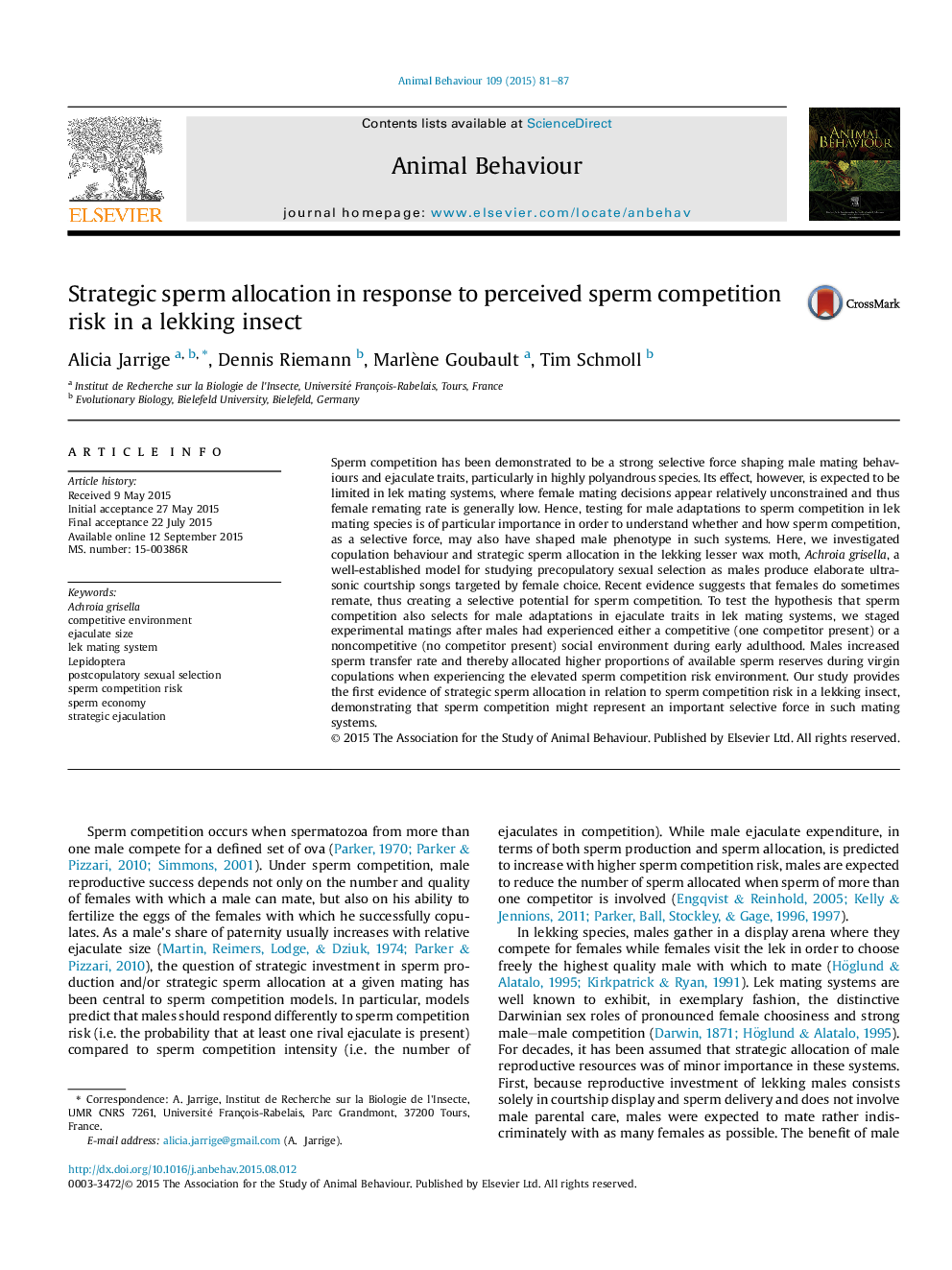| Article ID | Journal | Published Year | Pages | File Type |
|---|---|---|---|---|
| 8489568 | Animal Behaviour | 2015 | 7 Pages |
Abstract
Sperm competition has been demonstrated to be a strong selective force shaping male mating behaviours and ejaculate traits, particularly in highly polyandrous species. Its effect, however, is expected to be limited in lek mating systems, where female mating decisions appear relatively unconstrained and thus female remating rate is generally low. Hence, testing for male adaptations to sperm competition in lek mating species is of particular importance in order to understand whether and how sperm competition, as a selective force, may also have shaped male phenotype in such systems. Here, we investigated copulation behaviour and strategic sperm allocation in the lekking lesser wax moth, Achroia grisella, a well-established model for studying precopulatory sexual selection as males produce elaborate ultrasonic courtship songs targeted by female choice. Recent evidence suggests that females do sometimes remate, thus creating a selective potential for sperm competition. To test the hypothesis that sperm competition also selects for male adaptations in ejaculate traits in lek mating systems, we staged experimental matings after males had experienced either a competitive (one competitor present) or a noncompetitive (no competitor present) social environment during early adulthood. Males increased sperm transfer rate and thereby allocated higher proportions of available sperm reserves during virgin copulations when experiencing the elevated sperm competition risk environment. Our study provides the first evidence of strategic sperm allocation in relation to sperm competition risk in a lekking insect, demonstrating that sperm competition might represent an important selective force in such mating systems.
Related Topics
Life Sciences
Agricultural and Biological Sciences
Animal Science and Zoology
Authors
Alicia Jarrige, Dennis Riemann, Marlène Goubault, Tim Schmoll,
